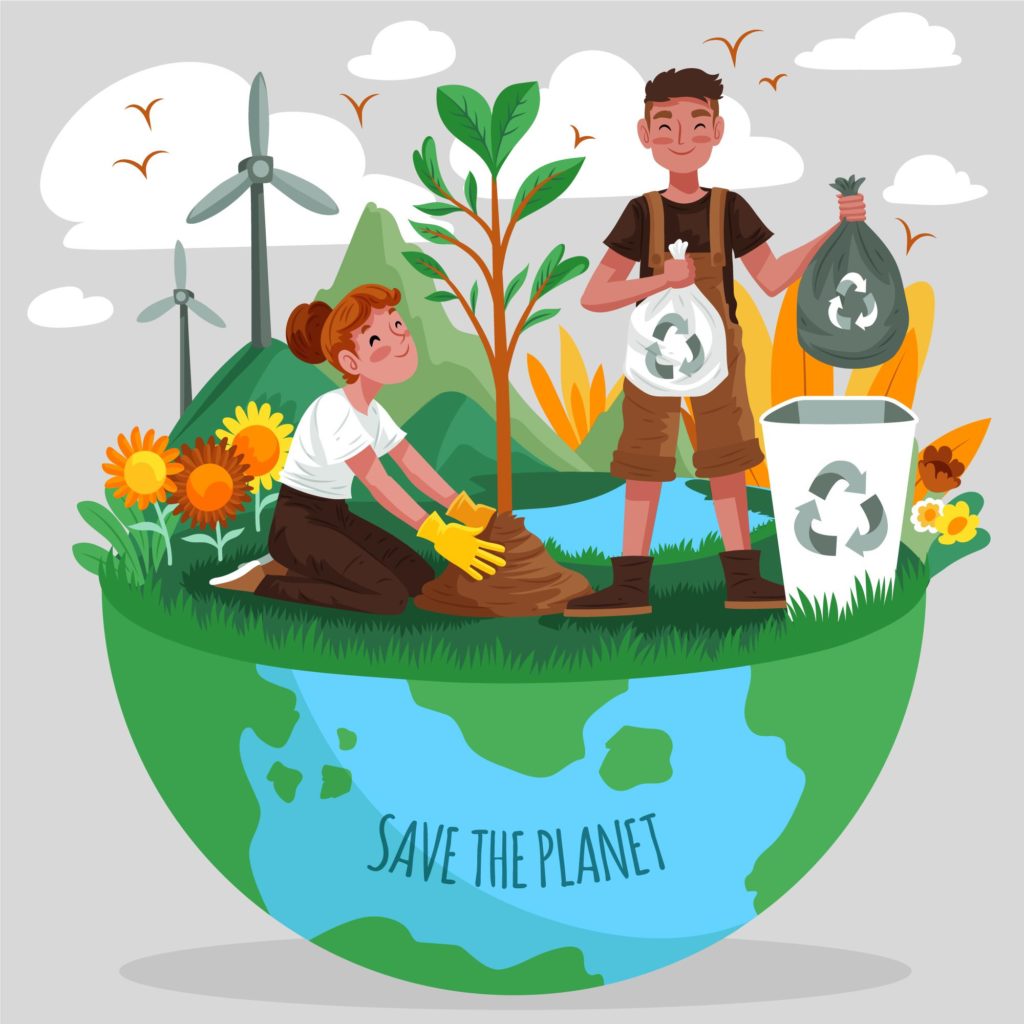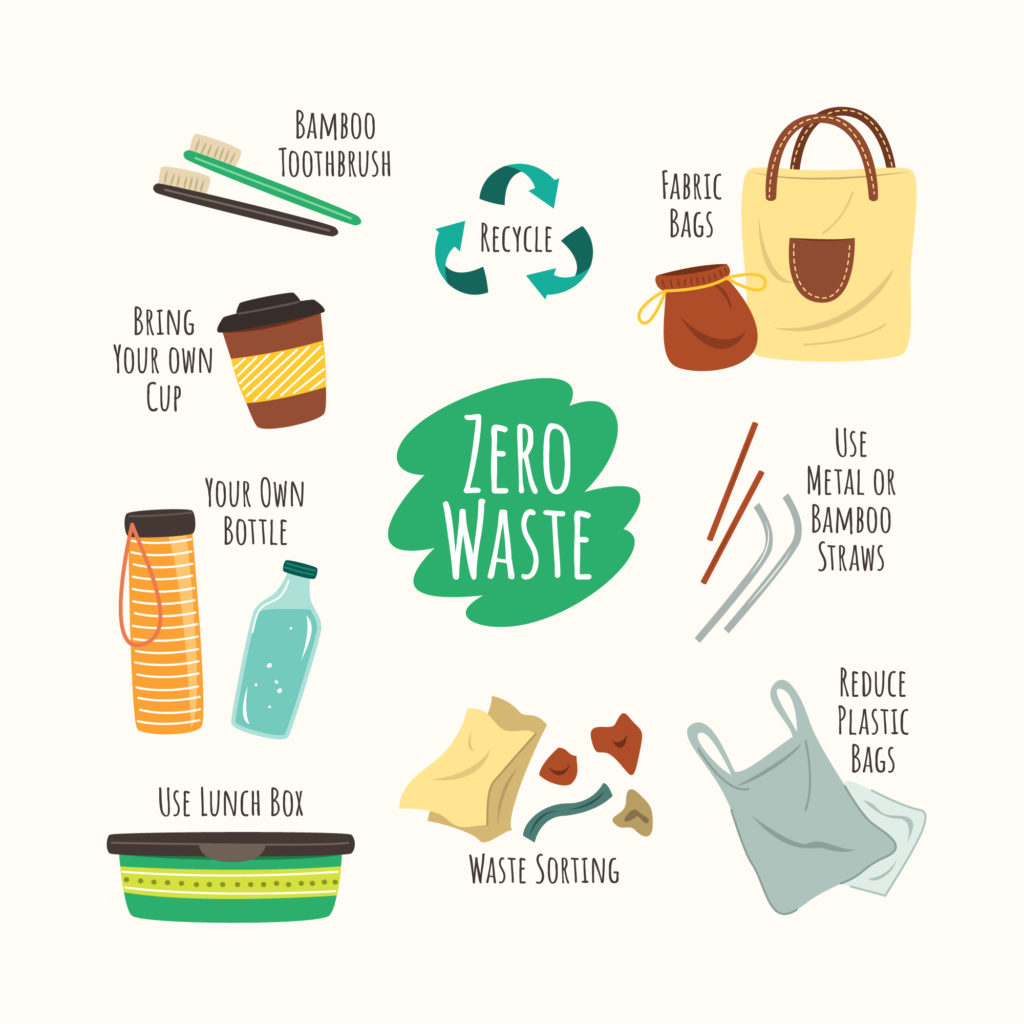
How we can Contribute to make Our Surroundings Environment Friendly
28-11-2023 | Posted By: Admin | 1808 View(s)
In the face of the growing environmental challenges, the call for individuals to contribute towards creating a more sustainable and eco-friendly world has never been more urgent. Each of us can make a positive impact through conscious choices and daily habits that prioritize the well-being of our planet. In this Blog, we will try to find out the possible ways in which we can contribute towards an eco-friendly environment by adopting sustainable practices in various aspects of our lives.
1. Sustainable Consumption: One of the most impactful ways to contribute to an eco-friendly environment is by adopting a sustainable approach to consumption. This involves making informed choices about the products we use and buy.
Go for eco-friendly products, such as those made from recycled materials or minimal packaging, which can significantly reduce our carbon footprint. Additionally, supporting local and sustainable brands helps promote responsible business practices. It can reduce the environmental impact associated with long-distance transportation.

2. Energy Efficiency: Another critical aspect of eco-friendly living is the efficient use of energy. Small steps, such as turning off lights and electronic devices when not in use, can make a significant difference. Look out for energy-efficient appliances and light bulbs, which can lead to long-term energy savings.
3.Renewable Energy Adoption: Transitioning to renewable energy sources such as solar, wind, and hydropower is a key factor in reducing dependence on fossil fuels and decreasing greenhouse gas emissions. Governments and businesses investing in renewable energy infrastructure play a pivotal role in promoting a cleaner energy future.
Renewable energy sources, such as solar panels or wind turbines, are also viable options for those seeking to reduce their reliance on non-renewable resources.
3. Ditch Single Use Plastic
We are all aware of the hazards of single use plastic the most common example of which is the polythene which we use so frequently for most of our daily consumption products like Vegetables,grocery etc.
Since we do not have a great waste recycling programme-These plastics often end up in landfills, water bodies, and natural habitats. Their non-biodegradable nature means that they be present in the environment for hundreds of years thereby continuing to pollute the environment
A lot of times they can find their way into rivers and oceans, posing a serious threat to marine life. Marine animals may mistake plastic debris for food, leading to ingestion and entanglement. This not only harms individual animals but also disrupts entire ecosystems.
Over time, single-use plastics can break down into smaller fragments known as microplastics. These microscopic particles are pervasive in the environment and can be ingested by organisms at various levels of the food chain, potentially causing harm to both marine and terrestrial life.
–The production of single use plastics often involves the use of various chemicals and additives, some of which can be toxic. When these plastics degrade or break down, these chemicals may leach into the environment, potentially contaminating soil and water sources.
–Economic Costs: The economic costs associated with the impacts of single-use plastics are substantial. Cleanup efforts for plastic pollution, the loss of tourism revenue due to polluted environments, and the negative impact on fisheries and other industries affected by marine pollution contribute to economic burdens on communities and nations.
–Limited Recycling Rates: Despite efforts to promote recycling, the actual recycling rates for single-use plastics are often low. Many types of plastics are challenging to recycle, and the economic viability of recycling certain plastics is limited. This results in a significant portion of plastic waste being disposed of in landfills or incinerated, further contributing to environmental problems.
–Aesthetic and Recreational Impact: Beyond environmental and economic concerns, single-use plastics also have aesthetic and recreational impacts. Plastic litter diminishes the beauty of natural landscapes, parks, and urban areas. Furthermore, it can interfere with recreational activities such as hiking, camping, and beach outings.
So if you see from above-These are difficult to recycle and the best thing to do is avoid it by carrying own bags which will not have the need to be recycled like jute bags.It is not only one of the biggest source of polluting our environment but also aids in causing numerous diseases not just in living beings but animals as well.

3. Waste Reduction and Recycling: Waste management is a primary environmental concern, and each individual can play a role in reducing waste production. Embracing the principles of reduce, reuse, and recycle is crucial. This involves minimizing single-use plastics, choosing reusable items, and actively participating in recycling programs. Composting organic waste further reduces waste while enriching the soil with valuable nutrients.
4. Sustainable Transportation: The transportation sector significantly contributes to carbon emissions. Opting for eco-friendly modes of transportation, such as walking, cycling, or public transit, can help reduce one’s carbon footprint. In cases where personal vehicles are necessary, choosing fuel-efficient or electric cars can positively impact the environment. Carpooling and ride-sharing are additional strategies to decrease the environmental impact of individual transportation.
5. Conservation and Preservation: Preserving and protecting natural habitats is essential for maintaining biodiversity and ecological balance. Supporting conservation efforts, whether through volunteering, donations, or advocacy, helps safeguard endangered species and ecosystems. Planting native trees and maintaining green spaces in urban environments contributes to local biodiversity and enhances the ecosystem’s overall health.
6. Water Conservation: Water is a precious resource, and its responsible use is vital for a sustainable future. Water-saving practices, such as fixing leaks, using water-efficient appliances, and collecting rainwater for non-potable purposes, can contribute to water conservation. Additionally, being mindful of water consumption in daily activities, such as bathing and watering plants, helps reduce overall water usage.
7. Environmental Education and Advocacy: Promoting environmental awareness and education is crucial for fostering a collective commitment to sustainability. Sharing knowledge about Eco-friendly practices and their environmental impact encourages others to adopt similar habits. Engaging in advocacy for ecological policies and participating in community initiatives can amplify individual efforts, creating a ripple effect that extends beyond personal actions.
Environmental Education: Promoting environmental education helps raise awareness about the importance of sustainable living and conservation. Education initiatives can focus on schools, communities, and workplaces to inform individuals about the impact of their choices and actions on the environment.
Green Infrastructure: Investing in green infrastructure, such as green roofs, permeable pavements, and urban green spaces, helps mitigate the negative effects of urbanization. These solutions enhance biodiversity, reduce the urban heat island effect, and improve overall air and water quality.
Regulatory Measures and Policies: Governments can play a crucial role in improving the environment by implementing and enforcing effective environmental regulations. Policies that incentivize sustainable practices, penalize pollution, and promote conservation contribute to a healthier environment.
Technological Innovations: Advancements in technology can provide innovative solutions to environmental challenges. Technologies that improve energy efficiency, monitor and reduce pollution, and enhance sustainable agriculture practices contribute to a cleaner and healthier environment.
Corporate Responsibility: Businesses have the power to influence the environment positively by adopting environmentally friendly practices. This includes reducing carbon emissions, implementing sustainable supply chain practices, and developing products with minimal environmental impact.
Community Engagement: Engaging communities in environmental initiatives fosters a sense of responsibility and collective action. Community-based projects, such as clean-up events, tree planting campaigns, and local conservation efforts, contribute to a positive environmental impact.
International Cooperation: Environmental challenges often cross national borders, making international cooperation essential. Collaboration between countries to address issues such as climate change, deforestation, and pollution helps create a more comprehensive and effective approach to global environmental problems.
Incentives for Eco-Friendly Practices: Governments and businesses can provide incentives for individuals and organizations that adopt eco-friendly practices. This can include tax credits, subsidies, and other rewards to encourage the widespread adoption of sustainable technologies and behaviors.
So to Conclude, contributing towards an eco-friendly environment requires a holistic and mindful approach to daily living. Individuals can collectively make a substantial impact by embracing sustainable consumption, energy efficiency, waste reduction, eco-friendly transportation, conservation, water conservation, and environmental education. Every small action counts and a more sustainable and harmonious relationship with the environment can be achieved through the cumulative effect of these choices. As we embark on this journey, Stay committed to making conscious decisions that prioritize the well-being of our planet, recognizing that the choices we make today will shape the world for future generations.








